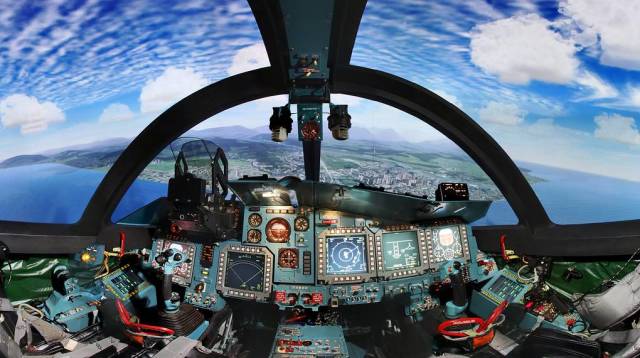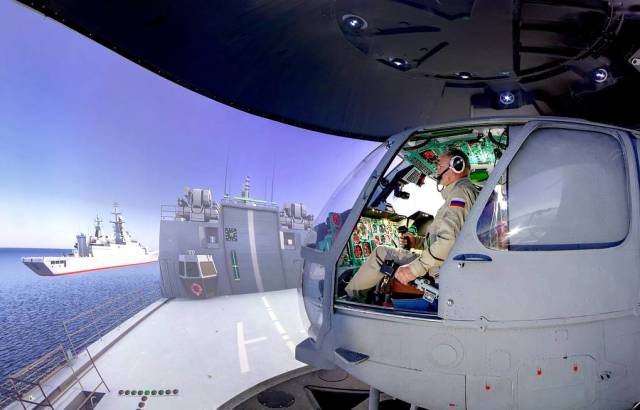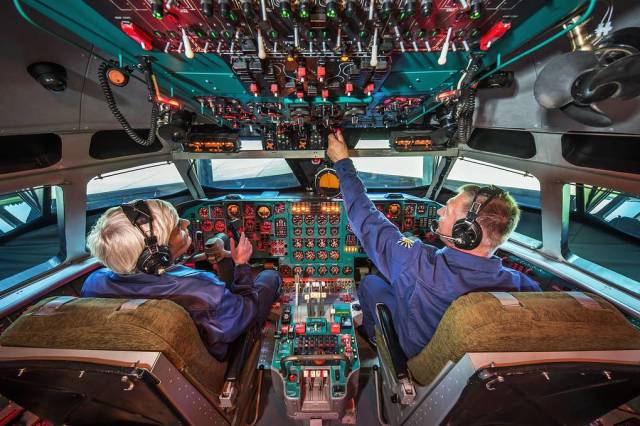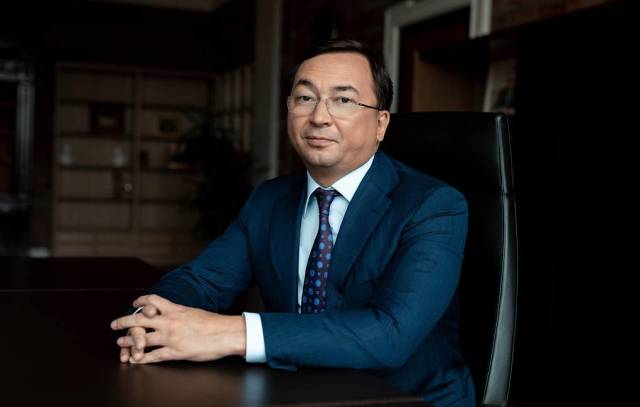What simulators will be delivered to the troops in the near future, what new products are already being developed for the Russian army, as well as about the most advanced air exercise machines on a movable base that allow you to experience the feeling of a real flight
The development of emergency aviation situations, complex flight tasks and combat missions begins on the ground. In the training of military pilots and honing their skills, a huge role is played by air trainers, which are becoming more and more perfect and realistic every year. In an interview with TASS, Igor Nasenkov, General Director of the Technodinamika holding of the Rostec State Corporation, spoke about what simulators will soon be available to the troops, what new products are already being developed for the Russian army, as well as about the most advanced mobile-based exercise machines that allow you to experience the feeling of a real flight.
- Igor Georgievich, tell us, for which aircraft and helicopters the holding is currently preparing simulators?
- The development of unique simulators for crew training is an integral part of the complex work in the aircraft industry, which we conduct together with the United Aircraft Corporation, Russian Helicopters and other Rostec enterprises. In the "Technodinamiki" circuit, the center for scientific and technical services "Dynamics"specializes in research and development in the field of aviation simulators. Since 1995, the company has implemented more than 300 projects for 50 modifications of various types of aircraft. At the same time, we do not intend to stop there and are currently developing more than ten new modifications of simulators for both military and civilian vehicles.
So, for the Mi-28N attack helicopter, we are preparing a computer training class for the training and retraining of flight crews. For the export version of the "Night Hunter" - Mi-28NE, the range of training tools being developed is much wider: complex simulators both on a fixed base and on a mobile dynamic platform, an operator's workplace for creating and editing landscape visualization scenes, computer training classes.
The Ka-28 helicopter will receive complex and procedural simulators for the crew, as well as a training complex for airborne training, and the Mi-8AMTSh and Ka-52 will receive an automated training system for theoretical training of flight and engineering personnel.
If we talk about aircraft, then for the IL-76MD military transport aircraft, we create a complex simulator (simulators of the highest level, often have a system of mobility and visualization, the cabin of the complex simulator completely repeats the real cabin of the aircraft-approx. TASS), and for the Su-34 multifunctional fighter-bomber - procedural (such simulators are not designed to acquire piloting skills, they are not equipped with a visualization system; consoles, instruments and controls are usually simulated using touch monitors-approx. TASS). For the promising Russian light transport aircraft Il-112B, Technodinamika is developing complex and procedural simulators, as well as a computer training class for the crew of the aircraft.

Su-34 fighter-bomber simulator
Image source: © Press Service of Technodinamika Holding"
In addition, "Dynamics" performs the components of development work related, in particular, to the development of the cabin housing of the integrated simulator of the Su-35, Su-30MK2, Su-27SKM fighters, as well as the hardware complex of the system for simulating the external visual environment of the simulator.
As for civil aircraft, a comprehensive simulator with a mobility system is being developed for the new Mi-171A2 helicopter, and for the Mi-38 - an automated training system for theoretical training of flight and engineering personnel.
- What new products are being implemented in aviation simulators? What is the main difference from the previous generation of simulators?
- The latest innovation implemented in the holding is the integrated mobile-based simulators for Rostec aircraft and helicopters. This is literally a transition to a new level of training, a new quality of combat training and improved flight safety. They allow you to get almost a full range of acceleration sensations inherent in real flight. That is, literally feel all the changes in speed and movement detected by the vestibular apparatus. And, of course, their main purpose is to work out a number of specific training tasks with a greater degree of confidence than on stationary simulators.
Technodinamika pays great attention to investments in the development and promotion of virtual reality technologies in the field of developing the latest technical training tools in aviation.
The virtual reality helmet is also used in the helicopter external suspension operator simulator, which was developed as part of the project to create complex simulators for crew training.
- What simulators have already been delivered to the Russian troops? Which ones are planned for delivery in the near future?
- To date, the Russian army has delivered flight simulators for Su-33, Su-34, MiG-31BM, IL-78M, L-39 and Mi-24P, Mi-28N, Ka-52/K, Mi-8MTV-1/8MTV-5/AMTSH, Ka-27M, Ka-29 helicopters.
In the near future, it is planned to supply simulators for training the crews of Ka-226.80, Mi-26, Ansat-U, Mi-8AMTSh, Mi-8MTV-5, Mi-28N, Ka-52 helicopters, as well as for the crews of Su-34 and Il-76MD aircraft.

Ka-27M helicopter simulator
Image source: © Press Service of Technodinamika Holding"
- What do simulators allow you to work out today, what are the most difficult situations?
- Let's start with the fact that simulators solve a huge range of tasks. They can provide both initial training of the crew, and retraining from another type of aircraft, advanced training of flight personnel or its restoration after a break in flight work.
As an example, let's take a complex simulator with a mobility system for the crew of a military helicopter. It is intended for training in piloting, air navigation, working with helicopter systems, conducting radio communications and procedures for coordinating the actions of the crew in normal flight modes. You can start with the basics - with pre-flight training and taxiing on the runway, and finish with aerobatics.
In addition, the simulator allows you to practice piloting in adverse weather conditions, when the flight is fully or partially performed by instruments. Crews can also work out abnormal situations caused by pilot errors or helicopter system failures - for example, engine failure.
Another example is the simulator of the IL-78 tanker aircraft. It includes a gas station operator's cab. The ability to work out the refueling process is very important, because it is directly related to flight safety. Test pilots note that it is very important to get used psychologically to how the plane approaches the refueling cone, at what angle, at what speed. Work out the entire chain of actions, turning it into an automatic skill: release the hose, open the pump and turn on the pumping… It is one thing when everything happens under normal conditions, and quite another when it is necessary to act in an emergency situation. And, again, simulators allow you to work out all these situations.
Pilots note that the reliability of "flights" on our simulators is very high. Within a couple of minutes after the "take-off", even professionals no longer understand that they are sitting in the cockpit of a simulator, and not a real helicopter or plane.

IL-78 tanker aircraft simulator
Image source: © Press Service of Technodinamika Holding"
- How long do flight simulators last? Is it possible to upgrade them?
- The assigned resource of the complex simulator on a movable base is 30,000 hours. The warranty period is 12 months, and the warranty time is 2000 hours during the warranty period of operation.
All components of our simulators have a modular structure. Therefore, we can carry out the modernization of products according to a simplified scheme. Such a need may arise not only in the modernization of the existing fleet, but also, for example, with the advent of a new generation of computer technology or a significant improvement in the characteristics of visualization systems. But we can expect such a qualitative leap no earlier than in seven or eight years. Works related to the modernization of products that are already in operation can be performed by TSNTU "Dynamics" under a separate contract.
- Do you develop simulators for the latest Su-57 fighter and IL-112B light transport aircraft?
- Currently, "Dynamics" performs an integral part of the development work related to the development of a comprehensive simulator of the IL-112B aircraft, a procedural, as well as a computer training class for theoretical training of flight and engineering personnel. Regarding the Su-57, the issue is under consideration.
- Are Russian flight simulators exported abroad?
- Technodinamiki simulators and training complexes are operated in ten countries around the world. In addition to Russia, these are Kazakhstan, China, the Czech Republic, Egypt, Mexico, Nicaragua, Peru, Algeria and Myanmar. Of course, we do not plan to stop there. Foreign customers operating Russian equipment are increasingly turning to us for technical training tools, so in the near future we will be able to increase our presence in the foreign market.
- Do you plan to present simulators at the International Aviation and Space Salon MAKS-2021?
- Technodinamika will present its products in its own separate pavilion at MAKS-2021 for the first time. The exhibition will reflect both our aviation direction, including simulators, and products of the Technodinamika holding companies "Techmash" and "Spetshimiya", which are part of the control circuit of "Technodinamika". I won't reveal all the secrets yet. I can only say that the exposition will be bright.

